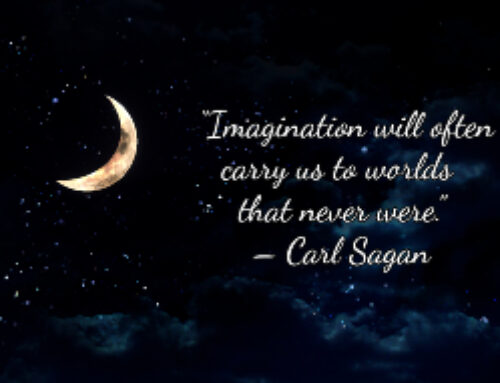Happy Friday, everyone! So we’ve finally reached the drafting stage, and I’m not talking about racing. I’m talking about the rough draft. I have my people with a purpose, living in a magical, fictional world, and I also have their breadcrumb trail. Now that I know the gist of the story, I can finally sit down and start writing it.
Before I start any writing session, I always make sure I have the essentials: drink, snack, music, and outline. Once I’m settled, it’s time to start typing away. I want to note that rough draft and first draft are the exact same thing and I use the terms interchangeably.
So, where do I start? I start at the end. I know it might seem odd to some of you, but writing the ending first helps me figure out where the story begins. For those that don’t know, endings often mirror beginnings. As a writer, I often struggle with getting the opening just right and starting the story off in the right place. If I begin too early, it just turns into an unnecessary info dump. If I start too late, it feels rushed, and the readers don’t have enough information.
When I’m working on the first draft, it’s basically me just tossing words down onto a blank page as the scenes play out in my mind. I follow my cast and write down what I see as fast as I can. I get the bare bones down and then go back to fill in the details later. These bare bones scenes are what I call my scene sketches. They’re focused on the characters and not much else. Small details like clothing or setting might get filled in, if I get a chance. It all depends on how fast the images play out. If they’re moving slowly, I get more details in and have less work to do afterwards. I still go back and fill in whatever blanks are left after my first round of writing for the day.
This is also the time that if I find any minor grammar or spelling errors, I fix them. The bigger stuff, I save for later. When I’m working on my first draft, I’m not about perfection. I’m all about getting the story down on paper; my inner editor gets shut off. The polishing and perfection come afterwards during edits, revisions, and rewrites. I’ll tackle those topics in another blog post.
Now, as I’m writing, there are moments that come up where I need more information or need to research something. When the words are flowing and the scenes are flashing before me, it’s not convenient for me to stop and lose my flow to look something up. Instead of hitting pause, I use placeholders. I place brackets, make a quick note, highlight them, and continue writing. Placeholders allow me to keep up with my cast without veering off track. Once I’m done writing, I’ll go back, do my research, and replace my placeholders with the info I need.
As I wrap up my work for the night, I jot down some notes about the upcoming scenes as a reminder to myself for the next day. Those notes are similar to the upcoming episode feature at the end of a TV show. They include the characters, goals, setbacks, setting, and any other pertinent details I need. These little scene notes serve to jolt my memory and kick-start my writing. They also help me when I get stuck and the words just won’t flow. Unfortunately, the notes don’t always help. So what happens when they don’t? Let’s talk about my methods for overcoming writer’s block.
Writer’s Block
Unfortunately, at some point during the drafting phase I struggle, get stuck, or get completely blocked. It’s something most writers deal with at some point and it absolutely sucks. It’s like static on a radio and you just can’t get the signal. What’s even worse than static is complete silence, otherwise known as writer’s block. When this happens, my normally chatty cast just shuts the hell up and refuses to talk to me. In fact, they refuse to show me anything. Even with my scene notes, they just won’t cooperate and I can’t get any words down on the page. So, what do I do to get the words flowing again?
I reread my work and try to power through. This is the first step I take and it’s usually the most effective, especially when I couple it with some music. I’ll break away from the scene I’m struggling with and pull up a couple of my most recent or favorite scenes. Then I pull up the playlist for that book, character, or chapter. Sometimes I’ll even make a new playlist. These methods help me connect with my cast and immerse myself back into their world. Music coupled with rereading my work usually clears the path, gets my characters to open up, and the images start playing in my mind once again. Unfortunately, it’s not always that easy and it doesn’t always work.
Sometimes I just need to skip ahead to another scene or work on something else entirely. This method is most effective when I’m not fully blocked. Meaning, I’m getting some chatter, but it’s not from the characters I need in that particular scene or in that particular book. Instead of trying to force the words, I switch channels and switch to something else for awhile. Working on something different allows the words to keep flowing and eventually, I can get back to the scene I was struggling with.
Another thing I do when I’m stuck or blocked is I pull up some of my aesthetic boards or casting boards. If you follow me on Instagram or Twitter, you’ve probably seen a few of them around. Pictures are a great source of inspiration for me. They always help set the scene and helps pull me back into my magical, fictional world. If that doesn’t work, I pull up some new images and make a new board that fits the scene I’m stuck on.
When the block is particularly bad, I’ll step away from my work in progress (WIP) and do something else. When I reach this point, it means that my brain and my cast need a break. This usually happens when I’m working on multiple projects nonstop. Just like everyone else, I burn out. Thankfully, I can recognize burnout before it fully hits me, so I know when to step away and do something for myself. I’ll either watch one of my favorite shows, listen to some music, read, exercise, cook, or play The Sims. The funny thing is, once my mind strays from my WIP, my cast gets chatty all over again. This method never fails. The small break is something we all need once in a while and the kick in the ass that gets the story moving again.
That’s all I have for today. I hope you enjoyed this little sneak peek of my writing life. Next up, I’ll talk about what happens once the first draft is complete. Until next time!
Cheers,
Amelia





Leave A Comment